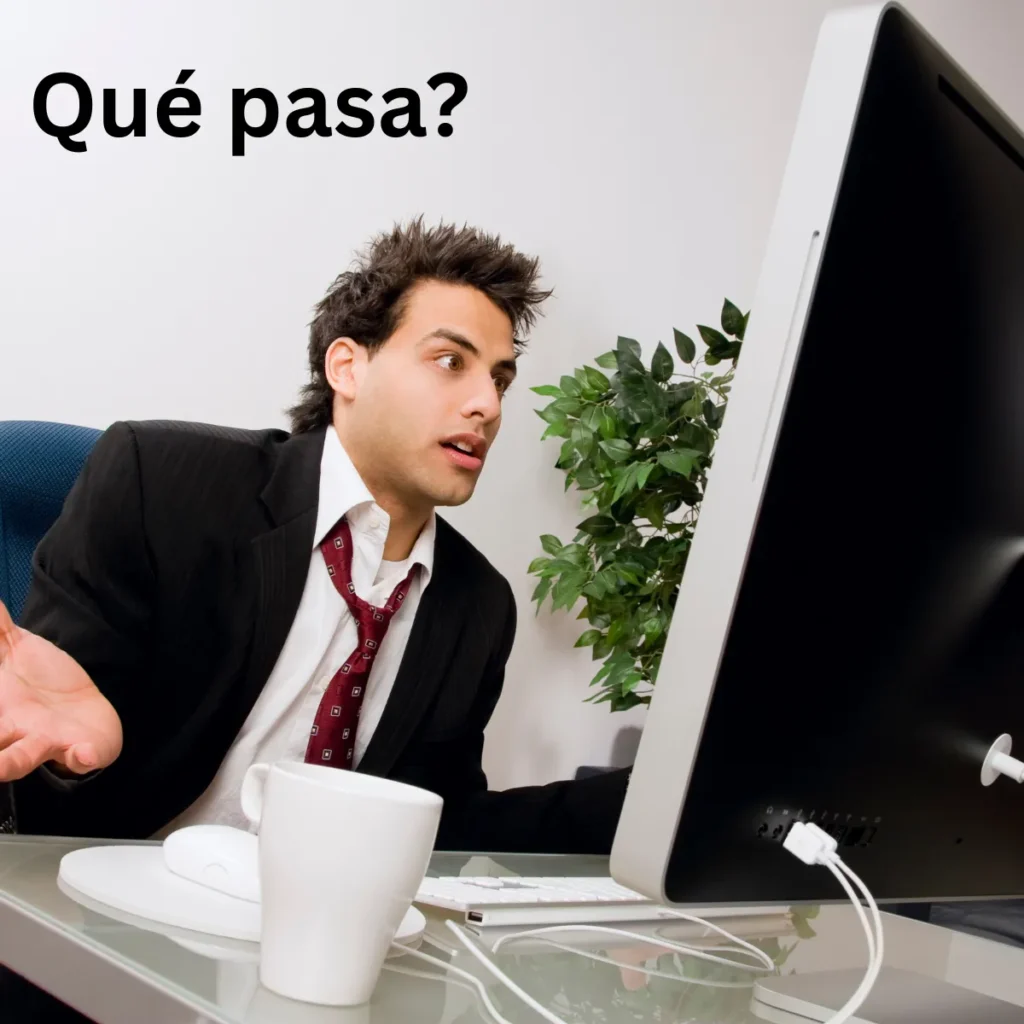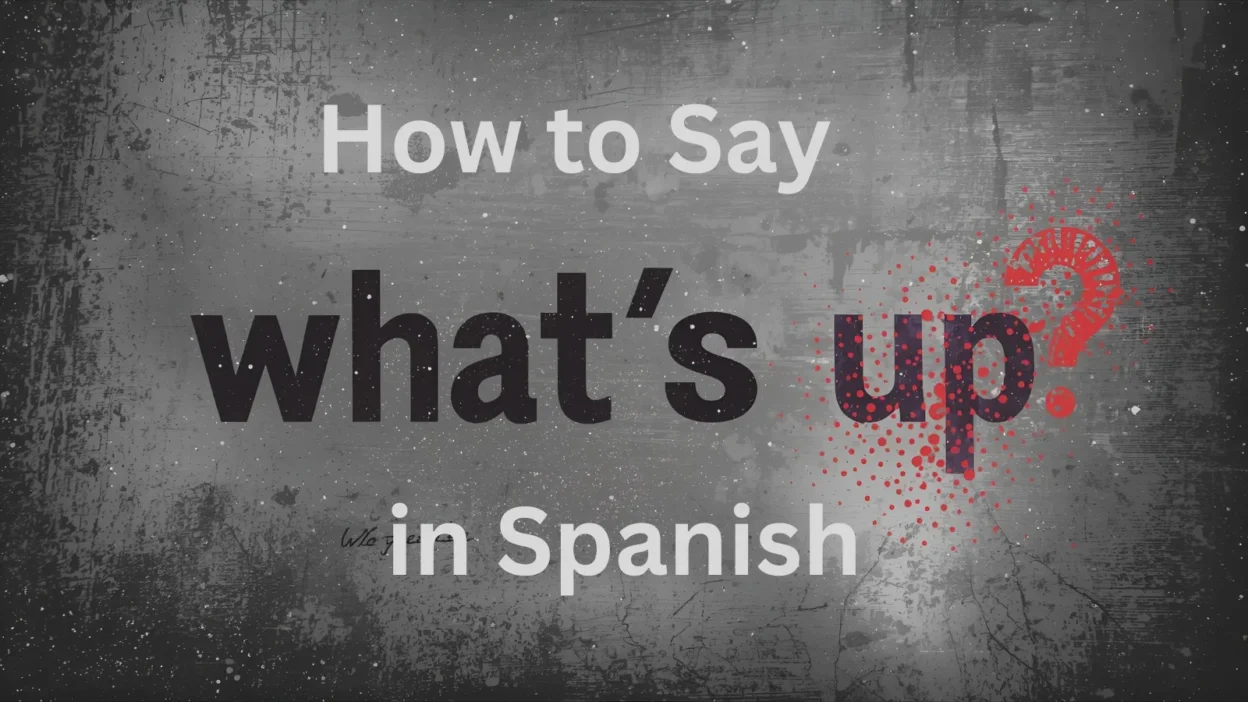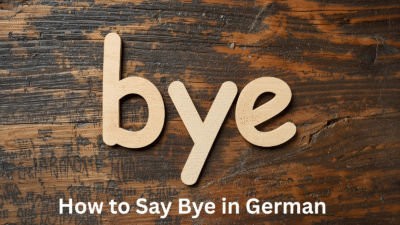How to Say What’s Up in Spanish is a fun and casual way to connect with friends and peers in everyday conversations. Just like in English, it’s used as a relaxed greeting rather than a literal question.
When learning, you’ll find several common phrases that vary by region and context.
You can also learn how to say What’s Up in Spanish to a girl, making your greeting sound friendly, natural, and culturally appropriate. These expressions help you sound more like a native speaker and avoid awkward translations.
Mastering them will make your Spanish conversations smoother and more engaging.
What’s Up in Spanish
15 Ways to Say What’s Up in Spanish
| # | Phrase in Spanish | English Meaning |
|---|---|---|
| 1 | ¿Qué tal? | What’s up? / How’s it going? |
| 2 | ¿Qué pasa? | What’s up? / What’s happening? |
| 3 | ¿Qué haces? | What are you doing? |
| 4 | ¿Qué cuentas? | What’s up? / What’s new? |
| 5 | ¿Qué onda? | What’s up? (common in Mexico) |
| 6 | ¿Qué hay? | What’s up? / What’s there? |
| 7 | ¿Qué rollo? | What’s up? (slang in Spain/Mexico) |
| 8 | ¿Qué más? | What’s up? / What else? (common in Colombia) |
| 9 | ¿Qué tal todo? | How’s everything? |
| 10 | ¿Qué me cuentas? | What’s new with you? |
| 11 | ¿Cómo andas? | How’s it going? |
| 12 | ¿Todo bien? | Everything good? |
| 13 | Hola, ¿qué tal? | Hi, what’s up? |
| 14 | ¿Qué hay de nuevo? | What’s new? |
| 15 | ¿Qué se dice? | What’s up? / What’s being said? |
Let’s dive into 15 popular ways to say What’s up? in Spanish — complete with conversation examples and cultural backstories to help you sound like a native speaker.
1. ¿Qué pasa? – “What’s happening?”

Origin:
One of the most standard and widely used expressions. It literally means “What’s happening?” and is common in both Spain and Latin America.
Example:
👤 Usuario A: ¡Ey! ¿Qué pasa?
👤 Usuario B: Nada, solo viendo una peli.
Use: Neutral and widely accepted; great all-purpose greeting.
2. ¿Qué tal? – “How’s it going?”
Origin:
Used mostly in Spain, this greeting is more like “How’s it going?” but often functions the same as “What’s up?”
Example:
👤 Usuario A: ¡Hola! ¿Qué tal?
👤 Usuario B: Bien, ¿y tú?
Use: Slightly more formal than “¿Qué pasa?”, great for polite conversations.
3. ¿Qué onda? – “What’s up?” (Mexico)
Origin:
“¿Qué onda?” literally means “What wave?”—a Mexican slang expression that became popular in the mid-20th century.
Example:
👤 Usuario A: ¿Qué onda, güey?
👤 Usuario B: Todo bien, ¿y tú?
Use: Super casual; common in Mexico and Central America.
4. ¿Qué haces? – “What are you doing?”

Origin:
Though it’s asking about someone’s current activity, in context, it can casually mean “What’s up?”
Example:
👤 Usuario A: ¡Hey! ¿Qué haces?
👤 Usuario B: Aquí, trabajando un rato.
Use: Informal; depends on tone and context.
5. ¿Qué hay? – “What’s there?”
Origin:
A short version of “¿Qué hay de nuevo?” (“What’s new?”), used mainly in Spain.
Example:
👤 Usuario A: ¡Hola! ¿Qué hay?
👤 Usuario B: Todo tranquilo.
Use: Semi-casual and often used among friends or coworkers.
6. ¿Qué más? – “What else?” (Colombia, Venezuela)
Origin:
Used frequently in Colombia and Venezuela, it’s a friendly way to say “What’s up?” or check in with someone.
Example:
👤 Usuario A: ¡Epa! ¿Qué más, parcero?
👤 Usuario B: Todo bien, gracias. ¿Y tú?
Use: Regional slang with a warm tone.
7. ¿Qué hay de nuevo? – “What’s new?”

Origin:
More literal translation of “What’s up?”, this phrase is a bit more inquisitive.
Example:
👤 Usuario A: ¡Buenas! ¿Qué hay de nuevo?
👤 Usuario B: Nada nuevo, la misma rutina.
Use: Friendly and slightly formal.
8. ¿Todo bien? – “All good?”
Origin:
Common in Argentina and Uruguay, this phrase works like “Everything okay?” or “What’s up?”
Example:
👤 Usuario A: ¡Che! ¿Todo bien?
👤 Usuario B: Sí, ¿y vos?
Use: Regional and friendly.
9. ¿Qué cuentas? – “What are you telling?”
Origin:
It’s like asking “What’s the news?”, used casually across Spain and parts of Latin America.
Example:
👤 Usuario A: ¿Qué cuentas, amiga?
👤 Usuario B: Pues nada nuevo, la verdad.
Use: Familiar, slightly literary.
10. ¿Qué show? – “What’s the show?” (Mexico, youth slang)
Origin:
Modern urban Mexican slang, playing off the English word “show.”
Example:
👤 Usuario A: ¿Qué show, bro?
👤 Usuario B: Aquí nomás, relajado.
Use: Very informal, often among teens or young adults.
11. ¿Qué tranza? – “What’s the hustle?” (Mexican slang)
Origin:
Mexican street slang with a rougher edge; use cautiously depending on context.
Example:
👤 Usuario A: ¿Qué tranza, carnal?
👤 Usuario B: Todo chido, ¿y tú?
Use: Informal, regional, street-style.
12. ¿Qué volá? – “What’s going on?” (Cuba)
Origin:
Afro-Cuban slang widely used in Havana. A very Cuban way of saying “What’s up?”
Example:
👤 Usuario A: ¡Asere! ¿Qué volá?
👤 Usuario B: Aquí, en la lucha.
Use: Only in Cuba or among Cubans.
13. ¿Qué fue? – “What was?” (Ecuador, Peru)
Origin:
Regional variation that loosely translates to “What happened?” but functions like “What’s up?”
Example:
👤 Usuario A: ¡Hola, loco! ¿Qué fue?
👤 Usuario B: Todo normal, brother.
Use: Informal and common in parts of South America.
14. ¿Cómo andas? – “How are you walking?”
Origin:
Argentinian and Uruguayan phrase that metaphorically means “How’s it going?”
Example:
👤 Usuario A: ¡Hola! ¿Cómo andas?
👤 Usuario B: Bien, gracias. ¿Vos?
Use: Warm, casual, and friendly in southern South America.
15. ¿Qué nota? – “What’s the vibe?” (Colombia)
Origin:
Colombian slang, especially among young people. “Nota” means “vibe” or “mood.”
Example:
👤 Usuario A: ¿Qué nota, mi hermano?
👤 Usuario B: Buena energía, todo bien.
Use: Urban, upbeat, and trendy.
Conclusion:
Learning how to say What’s Up in Spanish is a great way to sound natural and confident in casual conversations. From friends to classmates and even when talking to a girl, these phrases help you connect more personally and avoid sounding too formal. By practicing different regional variations, you’ll be ready to greet anyone with ease and authenticity.



